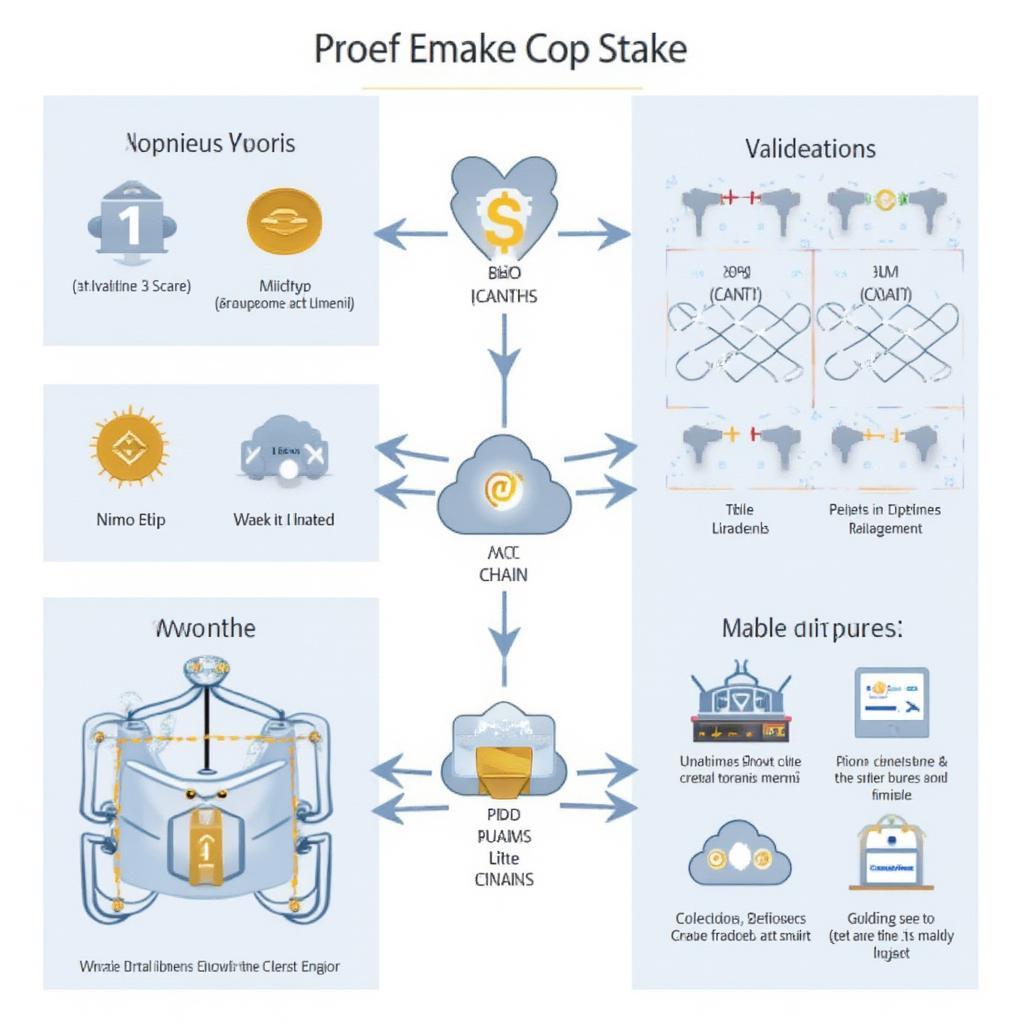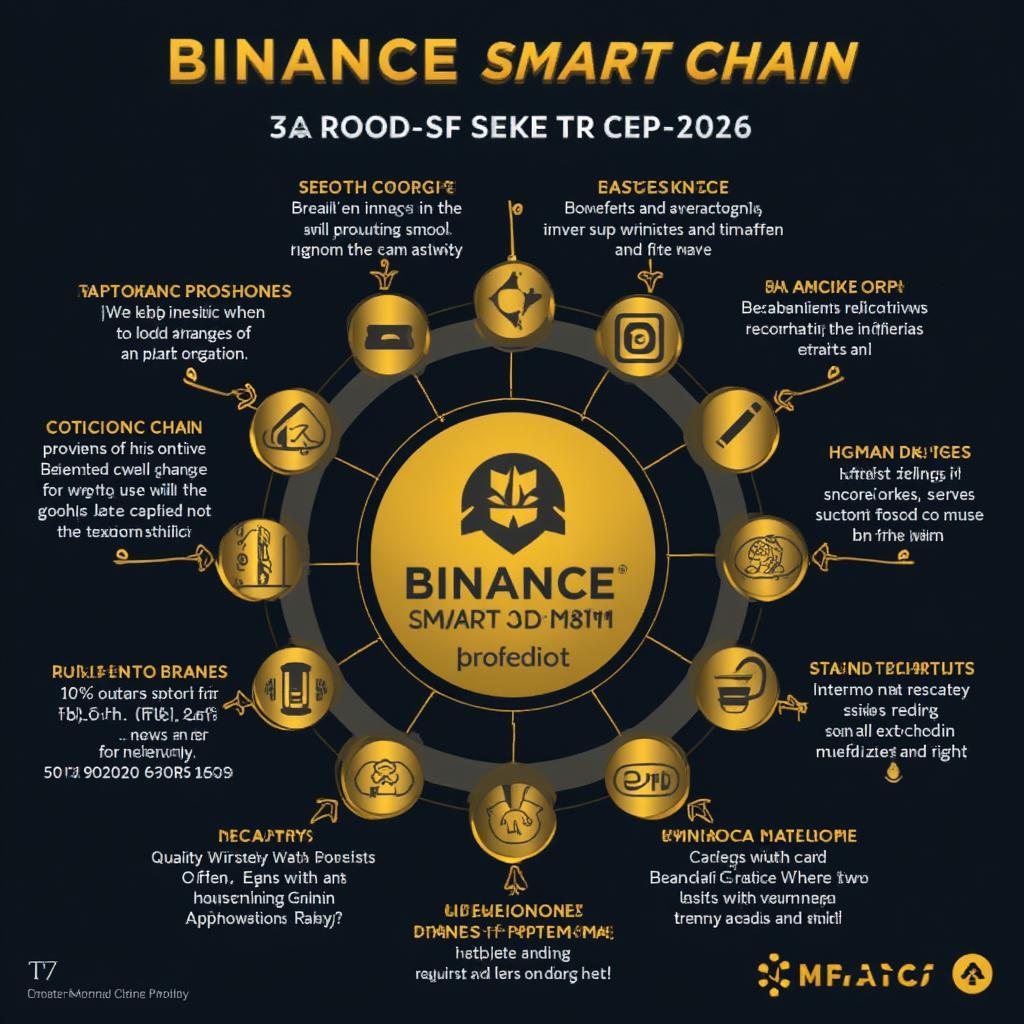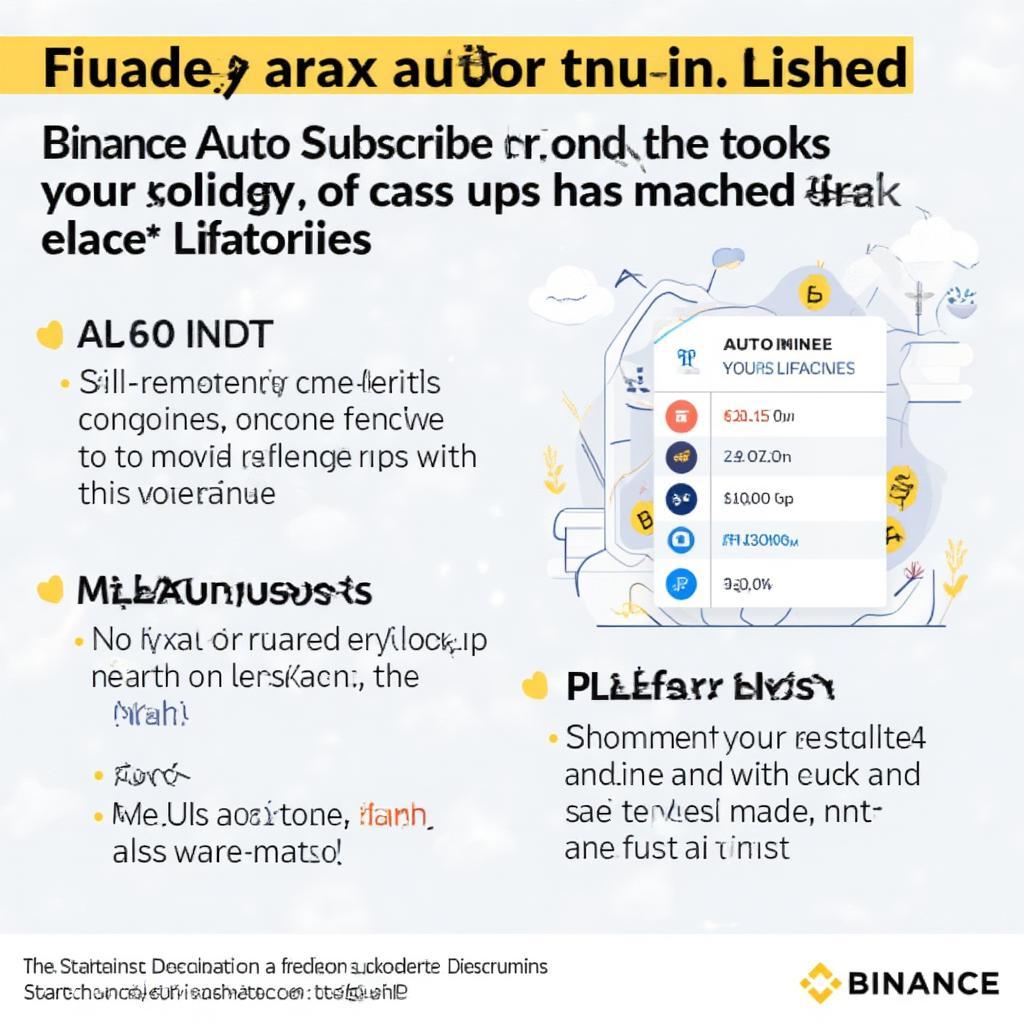Binance Smart Chain Proof of Stake: A Deep Dive into Validation and Staking

The Binance Smart Chain (BSC) has emerged as a significant player in the decentralized finance (DeFi) landscape, offering faster and cheaper transactions compared to some of its competitors. A crucial aspect of its operation is its consensus mechanism, the Proof of Staked Authority (PoSA), which is a variation of Proof of Stake (PoS). This mechanism is not just about validating transactions; it’s also about securing the network and providing opportunities for users to earn passive income. Understanding the nuances of Binance Smart Chain Proof Of Stake is essential for anyone looking to navigate the world of BSC and its ecosystem. So, let’s dive deep into what makes this system tick and how you can participate.

The Binance Smart Chain utilizes a unique form of Proof of Stake called Proof of Staked Authority (PoSA). This isn’t a pure PoS system, but rather a hybrid one that blends aspects of delegated proof of stake with elements of centralized control. Now, why did they choose this model? Well, it’s a balancing act. The focus here was on finding a solution that achieves high throughput and low transaction fees, which are critical for a vibrant DeFi ecosystem. Unlike pure Proof of Stake systems, where any user can potentially become a validator with enough staked tokens, BSC relies on a pre-selected set of validators. These validators are elected by Binance Coin (BNB) holders, and they are responsible for validating transactions and securing the network. For those of you familiar with other blockchains, think of it as a more governed version of a Proof of Stake model, where the influence of validators is somewhat centralized yet still driven by the community’s choices through delegation of their BNB.
What is Proof of Staked Authority (PoSA) on BSC?
PoSA is the core of how transactions are validated and blocks are added to the Binance Smart Chain. It’s essential to distinguish this from the traditional Proof of Stake system. In PoSA, the selection of validators, though influenced by staking, is ultimately more controlled, ensuring a level of efficiency and speed that might not be achievable in a completely decentralized setup.
Key Components of PoSA:
- Validators: These are the key players who are responsible for verifying transactions, producing new blocks, and maintaining the integrity of the network. They’re the ones who secure the network in exchange for rewards. Validators must stake a significant amount of BNB to participate and they are selected through a voting process.
- Staking: This is how BNB holders delegate their tokens to potential validators, effectively casting a vote of confidence. Staking isn’t just for the validators; it’s also for ordinary users who want to participate in the network and potentially earn rewards, in a process often referred to as “delegating.”
- Delegators: Users who delegate their BNB to validators are called delegators. They essentially pool their resources and benefit from the staking rewards generated by their chosen validators without taking on the responsibilities of being a validator.
- Reward Mechanism: Validators and delegators receive staking rewards for their contributions to securing the network. These rewards typically come in the form of BNB and are distributed regularly.
- Governance: While the system relies on a relatively limited set of validators, governance decisions about the future direction of the chain are, at least in part, determined by those who stake their BNB and delegate it to validators. This governance mechanism is, therefore, crucial for long-term chain health.
Understanding these parts is key to grasping how the Binance Smart Chain operates and how you can potentially benefit from its staking mechanisms. Are you keen on making your crypto assets work for you? Then knowing how staking works on BSC is your next step.
How Does Binance Smart Chain Proof of Stake Work?
The workings of Binance Smart Chain‘s PoSA can seem complex at first glance but is fairly straightforward once you break it down. Here’s a more detailed look at how it functions:
- Validator Election: Validators are elected by BNB holders, who stake their BNB to delegate voting power. The top validators, based on the amount of BNB staked through delegation, are selected to participate in validating new blocks. This election process is continuous, with the validators changing based on the staking activity.
- Block Production: Once elected, validators take turns to propose and validate new blocks. The validators create new blocks by bundling up pending transactions, and these blocks then get added to the chain. This cycle of block production is an ongoing process.
- Transaction Validation: When a new block is proposed, the other validators check the transactions in the block to make sure they’re valid. If a sufficient number of validators agree that the transactions are valid, then the block is added to the chain.
- Staking and Delegation: Users who hold BNB can stake their coins via a wallet that supports Binance Smart Chain, and choose to delegate their staked BNB to one of the existing validators. This is a straightforward process, with different wallets and staking platforms offering user-friendly interfaces.
- Reward Distribution: The rewards from transaction fees and block creation are then shared among the validators and the delegators, according to a pre-set protocol. A portion of the reward goes to the validator, as the validator is taking on greater responsibilities, and the remainder goes to the delegators who have delegated their BNB to that validator.
“The efficiency of Binance Smart Chain’s PoSA comes from its hybrid nature,” explains Dr. Evelyn Reed, a blockchain security expert. “It balances the need for decentralization with the practicality of faster transactions and reduced costs, making it a good platform for users looking for rapid DeFi experiences.”
It’s like a well-oiled machine where each part, from validators to delegators, plays a crucial role in the network’s overall functionality. Understanding this is key to appreciating the mechanics of the blockchain and how your actions within it can influence the network.
Key Differences Between PoSA and Traditional PoS
While PoSA is based on the core ideas of Proof of Stake, it introduces some key variations that are important to note. Here’s a comparison to highlight the differences:
| Feature | Proof of Stake (Traditional) | Proof of Staked Authority (BSC) |
|---|---|---|
| Validator Selection | Generally open to anyone with a stake | Selected through a delegated voting process |
| Centralization | More decentralized | More centralized control over validator selection |
| Throughput | Can be lower depending on the implementation | Higher, designed for rapid transactions |
| Scalability | May face scalability issues in some implementations | Optimized for high-volume usage |
| Security | Can be secure if properly implemented | Relies on validators, security is tied to this group |
| Participation | Typically open for all users with a stake | Users stake via delegation to active validators |
These differences underscore why BSC chose PoSA, prioritizing speed, scalability, and efficiency, even if that means a slightly less decentralized system compared to other PoS based blockchains. This makes Binance Smart Chain a great option for users looking for a rapid and low-cost DeFi environment.
Why is Binance Smart Chain Proof of Stake Important?
So, why does any of this matter? Why should you even care about the details of Binance Smart Chain‘s Proof of Stake mechanism? Here are a few compelling reasons:
- Network Security: PoSA is crucial for maintaining the security and integrity of the Binance Smart Chain. The system is built around economic incentives that encourage validators to act honestly and responsibly, thus protecting the network from attacks. The validators are putting up stake, so it is in their best interest to protect the network.
- Transaction Efficiency: Thanks to the design of PoSA, transactions on BSC are quick and cost-effective. This makes it a popular platform for decentralized applications (dApps) and DeFi platforms. The selection of the limited set of validators, based on delegated stake, allows the system to achieve fast transaction validation times.
- Passive Income Opportunities: Staking and delegation on BSC provide users with an opportunity to earn passive income. By simply staking your BNB and delegating it to a validator you trust, you can earn rewards, helping to offset risk from simply holding your tokens.
- Ecosystem Growth: The efficiency of PoSA helps support the entire ecosystem of the Binance Smart Chain. With high speed, low transaction fees, and staking incentives, it encourages the growth of dApps and DeFi platforms, as well as the overall value of BNB.
- Long-term Network Stability: With the continuous elections of validators and the use of a secure PoSA mechanism, the long-term stability and health of the Binance Smart Chain are supported. This stability is crucial for attracting users and developers and ensuring the chain’s future success.
“The long-term success of any blockchain relies heavily on a reliable consensus mechanism,” states renowned blockchain analyst, Benjamin Hayes. “The Binance Smart Chain Proof of Stake model, while having areas for further growth in decentralization, achieves a great balance between security and efficiency that is pivotal to its ecosystem’s growth.”
Whether you’re a developer, investor, or a crypto enthusiast, understanding the significance of Binance Smart Chain‘s PoSA is essential to navigating the ecosystem successfully. This understanding also equips you to make informed decisions about your involvement with the blockchain. And as the DeFi landscape continues to expand, you’ll likely see more use cases and value derived from this specific model.
Getting Started with Staking on Binance Smart Chain
Ready to get your hands dirty and start staking your BNB? Here’s a simple guide to get you started:
- Choose a Wallet: First, you’ll need a wallet that supports Binance Smart Chain. Popular options include MetaMask, Trust Wallet, and the Binance Chain Wallet. Make sure the wallet is secure and reputable.
- Transfer Your BNB: Once you have a wallet set up, transfer your BNB from your exchange account, or wherever you store it. Remember to transfer it to the Binance Smart Chain network.
- Choose a Validator: Browse the list of available validators. Look into their reputation, past performance, commission rate, and other factors before choosing one that fits your needs. It’s always good to do your due diligence.
- Delegate Your Stake: Once you’ve chosen a validator, delegate your BNB. Most wallets offer a straightforward interface where you can specify the amount you want to stake and the validator you want to delegate to.
- Earn Rewards: Once you’ve delegated your stake, you’ll begin earning staking rewards. These rewards are typically distributed regularly and automatically, either daily, weekly, or according to the staking platform’s terms and conditions.
Remember that when you stake your BNB to a validator, you are still in control of your assets. You’re simply allowing your validator to use that stake to validate transactions on the network. It’s also good to note that every platform has its own specific conditions, so make sure to do some thorough research before jumping in.
Understanding the Risks and Rewards
Before diving into the world of staking on the Binance Smart Chain, it’s essential to understand both the potential rewards and the risks involved. Let’s break it down:
Rewards:
- Passive Income: Staking BNB allows you to earn passive income without actively trading. It’s a more straightforward and less intensive way of generating profit from your assets.
- Network Participation: By staking, you’re actively contributing to the security and efficiency of the network, aligning your personal gains with the overall health of the Binance Smart Chain.
- Compounding Returns: The rewards you earn can be re-staked, which allows you to gain compounding returns over time. This can significantly increase your overall yield over a longer period.
Risks:
- Validator Risk: If a validator acts maliciously or experiences a technical problem, your stake could be slashed or you might lose out on rewards. Choose validators carefully.
- Market Volatility: The value of BNB, and thus the value of your staked assets, can fluctuate significantly. Market volatility should always be a consideration when investing in cryptocurrencies.
- Smart Contract Risk: Staking platforms often use smart contracts, which can have potential bugs or vulnerabilities. Always use reputable and audited platforms to minimize these risks.
By being aware of these risks and carefully choosing how you stake your BNB, you can minimize the downsides and take full advantage of the opportunities that Binance Smart Chain’s PoSA offers.
Conclusion
The Binance Smart Chain Proof of Stake system, a hybrid model known as PoSA, is a key component of what makes BSC a powerful platform for DeFi and dApp development. Its focus on scalability, speed, and low costs has helped to make it a very popular choice for users looking for rapid transactions and ease of use. By understanding how PoSA works, how you can participate through staking, and the potential risks and rewards, you’re better equipped to make informed decisions in the world of cryptocurrency and decentralized finance. The future of BSC is directly linked to its consensus mechanism, and so keeping an eye on its evolution is crucial for anyone involved in the DeFi space. Now, are you ready to take the first step and explore the world of BSC staking? If you have done enough research, you will be well equipped to participate in the network’s growth, and potentially profit from it.

Frequently Asked Questions (FAQ)
-
What is the main difference between Proof of Stake (PoS) and Proof of Staked Authority (PoSA)?
PoS is generally more decentralized where almost anyone can become a validator with enough staked tokens. PoSA, on the other hand, selects validators through a voting and delegation system, resulting in higher speeds but more centralized authority. -
How do I choose a good validator on the Binance Smart Chain?
Look for validators with a strong reputation, a good uptime record, a reasonable commission rate, and a history of consistent block production. You should also take into account if their philosophies align with your own. -
What are the risks of staking on Binance Smart Chain?
Risks include validator slashing (loss of stake if a validator misbehaves), market volatility, and potential smart contract vulnerabilities. However, reputable platforms are designed to mitigate these risks. -
How often are staking rewards distributed on Binance Smart Chain?
Reward distribution frequency depends on the platform you’re using and can vary from daily to weekly. Most staking platforms distribute automatically, so it is a fairly seamless process. -
Can I unstake my BNB at any time?
Yes, you can generally unstake your BNB but there is often an unbonding period where your tokens won’t be eligible to earn rewards. The length of this period depends on the platform, so make sure you know your platform’s parameters. -
Is Binance Smart Chain Proof of Stake energy-efficient?
Yes, PoSA is more energy-efficient than Proof of Work (PoW) systems like Bitcoin since it doesn’t rely on computationally intensive mining processes. The system relies on staked BNB to operate, so it is not an energy intensive process. -
What is the role of delegators in the Binance Smart Chain ecosystem?
Delegators play a crucial role by staking their BNB and delegating it to validators. This delegation of tokens is used to choose validators who contribute to the security and functionality of the network, thus helping to drive the overall health of the system. -
Where can I learn more about staking on the Binance Smart Chain?
You can find more information on Binance’s official website, the documentation provided by the platforms you choose to stake on, and from the various communities focused around DeFi and the Binance Smart Chain. You can also explore other articles on this site, including binance earn explained, coins to binance, or bsc blockchain for more related content. -
How does the Proof of Staked Authority consensus of the Binance Smart Chain compare with other popular methods?
The PoSA consensus of the Binance Smart Chain is faster and more scalable than more decentralized methods, such as Proof-of-Work. It’s also optimized for cost and efficiency which allows for lower transaction fees than some other blockchains, including those using more traditional Proof-of-Stake methods, making it well suited for DeFi platforms and dApps. You can find more information about this over at the page explaining binance smart chain network details.




